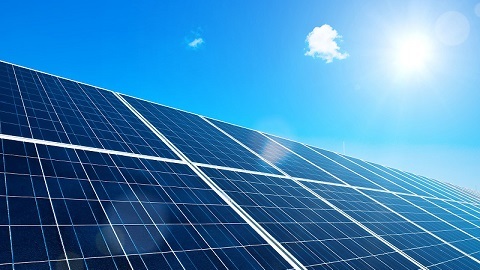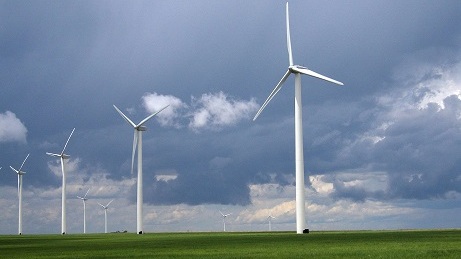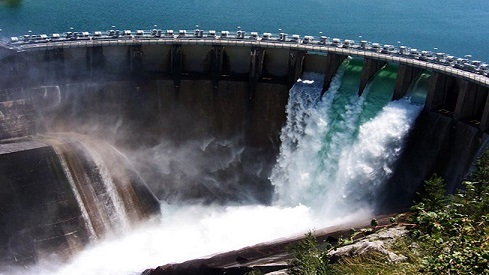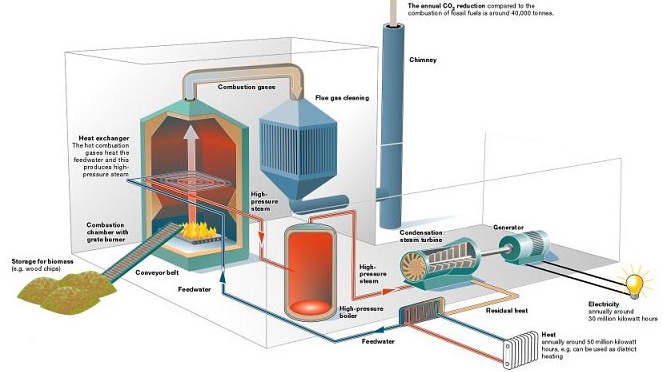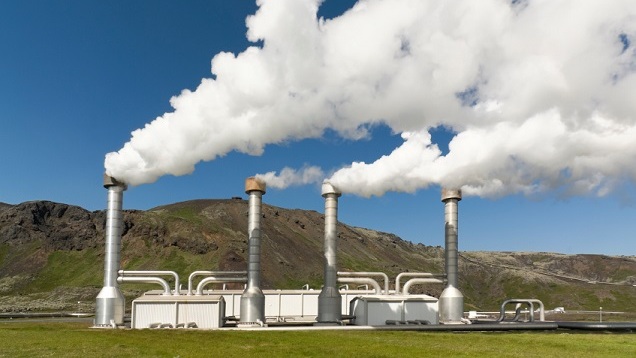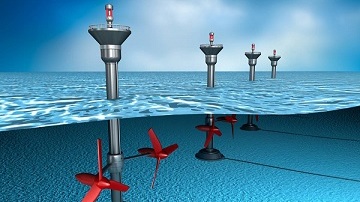Types of Renewable Energy | With Advantages and Disadvantages
There are so many different types of renewable energy in the 21st century and so many ways that we can tap the opportunity and become less dependent on the non-renewable energy. Most of the renewable source of energy are dependent on sunlight in some way. For example, wind and hydroelectric power are the result of differential heating of the earth surface which results in the air moving what we basically called as wind. Solar energy again a direct conversion of the sunlight into electrical power wither through using solar panels or collectors. Biomass energy on the other hand is like stored sunlight which are contained in the plants. But then they are some renewable sources which are not dependent on sunlight for example geothermal and tidal energy.
We shall learn about each renewable energy in details along with their pros and cons.
So read on !
Solar Energy Definition
So before we get into technical definition here are some interesting facts that you will love to know about solar energy:
- The sun provides enough energy in one minute which is sufficient to meet the energy demands of our planet for one year.
- In one day it provides more than enough energy than our current population on earth might require in 27 years.
- To sum it all, the amount of solar radiation hitting the earth over a period of three days is equal to the energy stored in all the fossil energy sources of our planet.
Definition of solar energy: It is one of the types of renewable energy which is free and every green resource of energy. The source of the energy as the name suggests come from the fusion power from the core of the sun. The energy radiated by the sun can be collected and used in different ways depending on its application. It could be from solar water heating to solar attic for domestic use or to maybe more complex application like conversion of sunlight directly into electrical power either through using mirrors, photo voltaic cells or boilers.
Now let us consider some of the pros and cons of solar energy
Solar Energy Pros and Cons
Pros | Cons |
|---|---|
It is a renewable source of energy, according to NASA our sun is here to stay for about 6.5 billion years, therefore we cannot run out of solar energy anytime soon. | One may argue that the solar power is expensive but with governments around the world encouraging people to take up solar energy for their needs the subsidies present makes the solar system affordable for general public. |
It is abundant source of energy, according to a research our earth receives approximately 120,000 terawatts of solar radiation. | One of the major challenge when it comes to solar energy is the issue of intermittent i.e. solar energy is an intermittent source since sunlight is present only during the day time and also it is quite challenging to predict overcast days. This is the reason we cannot depend on solar energy as our primary source of energy to supply base loads. |
Apart from being renewable and abundant it is also sustainable! which simply means that it can meet the demands of the present without compromising the ability of future generations. | Even if we try to store the energy produced during the day the batteries system is very expensive and also got shorter life span when compared to solar panels. |
Solar energy is environmentally friendly but some may argue that their emissions associated with the manufacturing, transportation and installation of solar panels but that is negligible as compared to its counterparts – the non-renewable sources. | Then there is the problem of pollution caused in the manufacturing of solar panels. According to studies, Nitrogen trifluroide and sulfur hexafluoride is used in the manufacturing process of solar panels which are some of the most harmful greenhouse gases and impacts the global warming in a much severe way. |
It can help you reduce your electricity bills. With schemes like net metering or feed-in tariff schemes, people can now sell power back to the grid when they produce more power than what they consume. | For it to be effective, we need a huge space for the installation of solar power plant. The power density which nothing but watt per square meter (W/m²) is only 170 (W/m²) for solar which is quite less as compared to oil, gas and nuclear power. |
Wind Energy Definition
First let’s understand how wind is generated, a wind on the surface of the earth is generated due to the difference of temperature on the earth’s surface when it is lit by sunlight. This wind can then be utilized for either pumping water or generating electricity but requires huge area to produce significant amount of power but at the same time more wind power means less smog, greenhouse gas emissions and acid rains.
Wind Energy Pros and Cons
Pros | Cons |
|---|---|
It is no doubt a green source of energy some may argue that the manufacturing process and installation of wind turbine causes pollution and contributes to the already serious problem of global warming but the electricity production as such doesn’t cause any pollution. | Wind can be very unpredictable and the availability is also not constant therefor it can be used as a primary source of power to supply to the base loads. |
The potential to harness the wind power is HUGE! according to one estimate the worldwide potential of wind power is more than 400TW. | The cost effectiveness as compared to solar energy is also highly debatable. |
As compared to solar, power production from wind is space-efficient. Though it is possible for the wind turbines to be kept close to each other but the space between them can be used for other purpose like farming which is not possible when it comes to solar. | Environmentalists consider wind turbines to be a threat to birds, bats and other flying creatures as a direct hit from the rotating blade could be fatal from them. |
Low operational cost is also another factor why production from wind is preferred. | They are also noisy and people living in its proximity find it extremely disturbing thus wind farms cannot be installed near urban centers. |
With the advancement of wind energy technology people can generate their own wind power and take advantage of the net metering and other incentives offered by the government which will help to reduce their electricity bills. | Some people also complain about the fact that it ruins the look of landscape and don’t look very pleasing to the eyes. |
Hydroelectric energy
Hydroelectric energy is one of the types of renewable energy which can be defined as a form of hydropower which utilizes the kinetic energy of the running water to produce electricity. Moreover, the hydroelectric energy is potential energy that is converted into kinetic energy of water with the help of gravity, this running water is then used to turn the blades of turbines which in turns rotates the generator producing electricity and then distributed to the end users with the help of the electrical grid.
Hydroelectric energy Pros and Cons
Pros | Cons |
|---|---|
It is a renewable source of energy. | Hydroelectric power plant has a huge effect of the flora and fauna of the surrounding areas especially the fish habitats. |
It is pollution free which means electricity production from such a source is not polluting itself. | They are very expensive to build but at the same time the operation cost is less and requires less manpower to run the plant. |
It is probably one of the most efficient and reliable source of the renewable energy and therefore it is of no surprise that about 20% of the electricity consumption in year 2006 was generated through hydroelectricity. | Since such kind of plant is totally dependent on the availability of water a drought situation will simply bring the whole plant to a stop. |
It is flexible and production of power from a hydroelectric power plant can be easily control by just adjusting the water flow. | Limited reservoirs and available locations can be a major challenge to increase the number of hydroelectric power plant. |
As compared to its counterparts like coal or nuclear energy, hydroelectric power plant is much safer since there is no involvement of fuel other than water. | Such kind of energy can’t be harnessed by common people and thus they can’t take advantage of any net metering or any other incentives. |
Biomass Definition
Biomass is one of the types of renewable energy which can be defined as the energy stored in the plants or organic matter through the process of photosynthesis which can then be converted for everyday use by either combustion which releases carbon dioxide or for the production of methane gas or for the production of alcohol which is widely used in automobile fuel. The heat released from combustion can also be used to produce steam which is then used to rotate the generators through produce electricity. This electricity is then transported through a distribution network with the help of transformers.
Due to easy accessibility to biomass fuel like wood products, crop residues, unwanted vegetation and plant, biomass has become one of the most commonly used renewable source of energy throughout the world. According to few estimates that biomass accounts for about 15% of the world's total energy supply and as much as 35% in developing countries.
Biomass Definition Pros and Cons
Pros | Cons |
|---|---|
This is too a renewable source of energy since resources of biomass like crops, manure and other organic material will always be present. | In some cases, it can be expensive and therefore not feasible. It is noted that extraction of biomasses can be expensive also harvesting and storing of different type of biomasses can be challenging. |
One of the most important advantage of biomass is that it is carbon neutral in simple terms t means that the biomass is a part of the carbon cycle. | Huge area is required for different processing of biomass and especially for storage of biomass. |
It is very cost effective and according to some estimate the cost of production of energy from biomass is 1/3 less than fossil fuels doing the same job. | |
There is no doubt that the source of biomass is abundant and therefore we have a huge opportunity to utilize. |
Geothermal energy
In short Geothermal energy is one of the types of renewable energy which is the energy of the earth or in other words the source of geothermal energy is the heat contained inside the earth. The heat energy which is augmented from radioactive decay seeps out somewhere and every day on the surface of the earth. In some location the geothermal gradient is quite high which means the increase in temperature with increase in depth is quite high and therefore feasible for the generation of electricity. Such locations are very rare on earth and also comes along with lot of technical difficulties which is required to overcome in order to make it a feasible project.
Geothermal Energy Pros and Cons
Pros | Cons |
|---|---|
They are environmentally friendly and produce very less pollution as compared to conventional sources of energy like coal etc. | Since there is abundance of greenhouse gases below the earth surface, some of them escape to the surface and in to the atmosphere which is a problem and this emission are higher near the geothermal power plant. Studies have found that such power plants are associated with release of sulfur dioxide and silica emissions which highly harmful for the environment. |
Since the geothermal reservoirs come from natural resources and they replenish themselves naturally it is considered to be a renewable resource. | According to research construction of geothermal power plants can cause the surface instability and in worst case scenario can lead to earthquakes due to hydraulic fracturing which is an essential part of the geothermal system power plants. |
Geothermal energy got massive potential, our worldwide energy consumption is somewhere around 15 terawatts which is nothing as compared to the stored potential of the earth. | They are very expensive to establish. According to studies $2 – 7 million is required to setup a plant with a capacity of 1 megawatt. |
Since it is not weather dependent unlike solar and wind energy it is highly reliable source of energy and therefore a perfect choice to supply base load demands. | They are very location specific and only few countries are blessed with such resources. For example, Iceland and Philippines where geothermal accounts for about one third of their energy supply. |
It is perfect for either heating and cooling applications since we require temperatures more than 150°C (about 300°F) to turn the blades of the turbine and generate electricity. | They might not be sustainable if the reservoirs fluid is depleted faster than it’s replenished |
Tidal energy
Tidal energy or in other words tidal power is another types of renewable energy which are caused because of sun and moon’s gravitational influence on the oceans of the earth along with earth’s own rotation around its own axis. The height difference between the low and high tides creates tidal waves or currents in the coastal areas. Theses tidal currents in some places are strong enough to drive turbines. The opportunity to generate power from tidal energy is immense, according to one estimate about 450 TWh of electricity can be produced in a year.
Tidal energy Pros and Cons
Pros | Cons |
|---|---|
It is a renewable source of energy. As given above the source of tidal energy is the gravitational pull of moon and sun which is not going to come to an end anytime soon. | They are known to cause environmental issues since they rely on manipulation of ocean level just like the hydroelectric power plants. |
Along with being a renewable source it is also environmentally friendly, it doesn’t emit any gases which are harmful for the environment. Also it doesn’t require hue space to set it up. | With the current technology that we have it has to be located close to the land only. |
Since tides can be predicted with great accuracy because of the well know cycles making it easier to construct a system with the right configuration and the equipments to be used. | They currently some of the expensive way to produce electricity mainly due to the fact that the technology is still under the development stages. It is estimated that by the year 2020 tidal power will be commercially profitable especially when done on a large scale. |
Since the driving force is water, which has a greater density than year (1000 times higher) power can be generated even at very low speeds. | |
They have lifelong spans |

